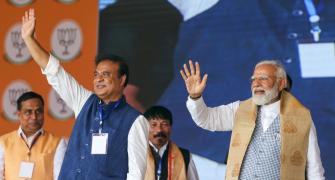When it was under scrutiny for selling spectrum cheap to new operators in 2008, the department of telecommunications or DoT submitted in its defence that the policy directives were to improve telecom services in the country and not to maximise revenue. Low-priced spectrum would keep the cost of business low, and more players in the market would keep prices under check and improve the efficiency of spectrum usage, the argument went. There is some element of truth in it. In the objectives and goals envisaged for the telecom sector in the 10th Five-Year Plan (2002 to 2007), when the sale of spectrum was initiated, revenue was, at best, a secondary consideration.
There is some element of truth in it. In the objectives and goals envisaged for the telecom sector in the 10th Five-Year Plan (2002 to 2007), when the sale of spectrum was initiated, revenue was, at best, a secondary consideration.
However, one of the objectives was to improve efficiency and transparency in spectrum management. Still, the sale of spectrum ran into heavy controversy.
Charges were traded thick and fast; enquiries and investigations have been carried out by more than one agency. As a result, one former minister, one political heavyweight, and a handful of businessmen, bureaucrats and executives are in jail.
But that's not the purpose of this column - it seeks to check how the auction of spectrum in 2008 at prices determined in 2001 has helped the cause of telephony.
A look at subscriber numbers should help. Information put out by the Cellular Operators Association of India (COAI) for June shows that most of the new licensees have not been able to make a headstart.
Uninor is the largest amongst them with a share of 4.4 per cent, followed by Videocon (1.19 per cent), S Tel (0.55 per cent), Loop Mobile (0.53 per cent) and DB Etisalat (0.23 per cent).
Uninor and Videocon can count themselves ahead of state-owned MTNL (market share of 0.87 per cent); but then MTNL operates in only two circles (Mumbai and Delhi), while both Uninor and Videocon hold the licence for 13 circles.
The top three players Airtel, Vodafone and Idea had a combined share of 67.77 per cent, or two-thirds, of the market, according to COAI.
A recent report published in this newspaper, quoting numbers collated by COAI, showed that the average revenue per user or ARPU of the new players is a fraction of the incumbents.
Uninor's was Rs 39, DB Etisalat's Rs 26.75, S Tel's Rs 25.99 and Videocon's Rs 8.50 in the quarter from January to March.
The average ARPU of all GSM-based mobile service operators was Rs 118 during the period - three times Uninor's, the best of the newcomers.
It's not certain if these ARPUs cover the cost of acquisition of customers for the
Theoretically, low-priced services could have been possible had spectrum been obtained inexpensively by the new operators.
But at least in two cases - Uninor and DB Etisalat - that didn't happen. DB Realty, for instance, had obtained the telecom licence and the spectrum that came with it for Rs 1,537 crore (Rs 15.37 billion).
It subsequently sold 45 per cent in the venture (Swan Telecom) for Rs 4,200 crore to Etisalat of the United Arab Emirates.
From the viewpoint of Etisalat, which is the operator, the acquisition cost is not Rs 1,537 crore (Rs 15.37 billion) but Rs 4,200 crore (Rs 42 billion).
The whole purpose of cheap spectrum to reach the bottom of the telephony market was defeated right at the beginning. It is strange, indeed, that the authorities couldn't anticipate such a situation.
Even as spectrum was being sold at throwaway prices to newcomers, incumbents were denied additional spectrum on the grounds of scarcity and inefficiency.
The formula for allotment of more spectrum was revised upwards. It was argued that the incumbents were hoarding a precious commodity and needed to improve the efficiency of their spectrum before they could ask for more.
Suffice it to say that nowhere else in the world have operators crammed so many consumers in so little spectrum. The matter is in the courts, and the question of measuring efficiency may finally be addressed.
If consumer welfare was the objective, additional spectrum for the incumbents wasn't a bad idea. There were also demands for taking back spectrum from those newcomers who hadn't rolled out services and reallocating it to the incumbents.
But, as reported, it now looks a distant possibility that the newcomers will be penalised by DoT. There seem to be differences between the Telecom Regulatory Authority of India and DoT over assessment of the rollout obligations. The matter is likely to hang in balance for a while.
Sceptics also say that 2008 was not the first time spectrum has been sold without an auction.
Way back in the mid-nineties, licences were issued to two operators in each of the four metros on the basis of a "beauty parade", and Analjit Singh's Max India was the first to liquidate a large chunk of its investment and make a neat profit.
The difference is that Mr Singh sold after building the business from scratch - a perfectly natural thing to do. This is unlike the newcomers, some of whom made huge profits from stake sale even before they could acquire the first customers.









